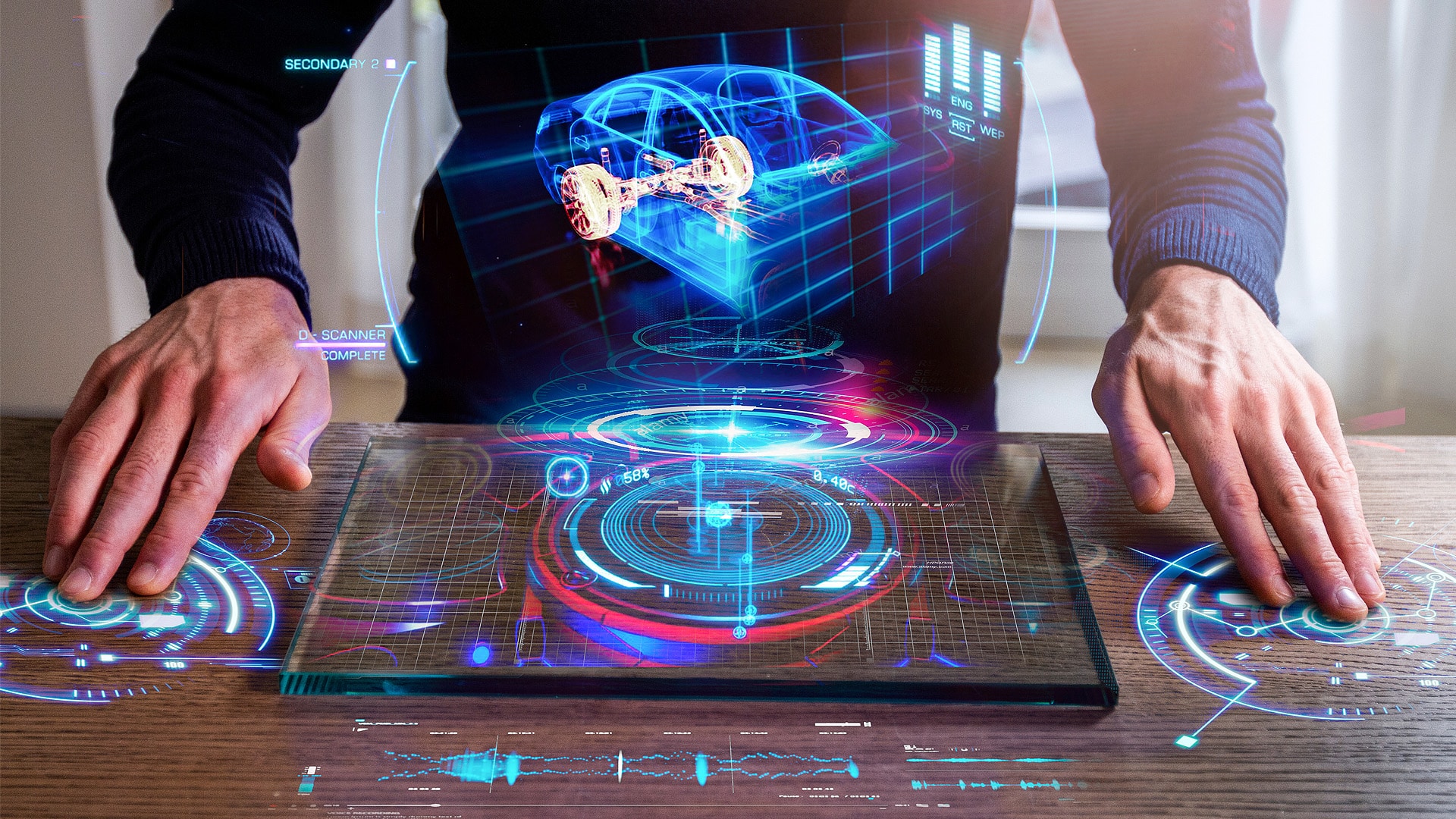Exploring the Potential of Laser Beam Scanning in Augmented Reality

Introduction to Laser Beam Scanning (LBS)
Overview
Laser Beam Scanning (LBS) is key in display technology that steers laser beams over a surface to create images. The great dynamic range, large color gamut, and high resolution without increasing device size render the technique unique. E.g., LBS systems have a notable color gamut space advantage over RGB in color gamut comparisons, reaching 214%.
AR, VR, and MR devices use Laser Beam Scanning display technology to scale resolution and field of view (FOV) while retaining a small form factor. Studies and developments show that LBS can provide ultra-compact, power-efficient, high-performance XR glasses. Along similar lines, it estimates a 66% CAGR in smart glasses sales through 2026.
Key Components
Laser Beam Scanning display systems use MEMS (Micro-Electro-Mechanical Systems) mirrors and laser diodes. MEMS mirrors (1-3mm) in size guide laser beams over the required field. It allows pixel-by-pixel image rendering. Laser light’s coherence and narrow bandwidth enable displays with better brightness, contrast, and color accuracy than fixed-pixel systems.
Compact RGB laser diode modules and MEMS mirrors enable Laser Beam Scanning displays that modify power consumption depending on image content. Using software like the TriLite Calibration Module for beam combination and image distortion correction shows LBS’s technical maturity. It offers a foundation for future wearable display technologies.
Note that laser diodes can last 100,000 hours, and MEMS mirrors over 60,000 hours. Subsequently, it demonstrates Laser Beam Scanning systems’ life expectancy.
Advantages of LBS Technology for AR Applications

Precision and Speed
Laser Beam Scanning technology is precise enough to add digital information that blends with reality. As highlighted previously, LBS uses MEMS mirrors to steer laser beams over the display region for per-pixel modulation, unlike fixed-pixel display solutions. It renders digital objects with crisp edges and great detail for realistic AR experiences.
Because LBS can swiftly vary laser intensity for each pixel in real-time, its refresh rates are fast to avoid motion blur and delay. Remember, LBS systems can attain refresh rates that allow smooth visual motion. It keeps augmented information steady and jitter-free while the user travels across the environment. Furthermore, LBS’s “flying spot” characteristic allows rapid adaptation of display settings, including brightness and resolution, to content needs. It optimizes image quality and responsiveness for better AR user engagement.
Wide Field of View (FOV)
Intense AR experiences need a broad field of view to avoid tunnel vision. LBS technology has a wide FOV since it is not limited by display panel size. Instead, MEMS mirror movement range controls FOV. This flexibility lets designers improve FOV without increasing device size or complexity. Meanwhile, LBS can enable FOVs that are competitive with or better than those of other display technologies for more realistic AR applications.
LBS’s scalability permits FOV modifications for individual applications without compromising image quality. For example, Laser Beam Scanning displays might enhance the user’s experience of presence in the augmented environment for applications requiring wide peripheral vision. Hence, LBS technology’s configurable visual experience meets AR applications’ different needs, from navigation assistance to interactive gaming.
Energy Efficiency and Outdoor Usability
LBS is energy efficient since it only generates and consumes light where information is presented. This selective lighting minimizes power usage for better portable AR device battery life. Laser beam scanning displays use less energy than other display technologies that need full-screen illumination. It implies longer usage times on a single charge, which benefits AR applications with prolonged usage, including field service or education.
Thanks to its brightness and contrast, LBS is visible outside. Lasers emit brilliant light that is visible in sunshine. Outdoor AR applications need this feature since ambient light might wipe out display information. Notably, LBS systems can adjust to different light situations and retain visibility. Outdoor usability guarantees that AR applications work regardless of illumination while broadening the situations in which augmented reality may be used.
Laser Beam Scanning in the Automotive Sector
Versatility Across AR Devices
Laser Beam Scanning technology is adaptable to AR headsets, smart glasses, and handheld devices. LBS’s minuscule physical size and high-resolution output render it flawless for devices with limited space and high-quality needs. LBS allows AR glasses to display visuals with high brightness and contrast ratios for good sight in different light circumstances. According to recent research, this technology provides resolutions up to 1080p. It makes even the finest details sharp and visible for accuracy and clarity applications.
Application in AR-HUD for Vehicles
Sophisticated AR Head-Up Displays (HUDs) from LBS technology transform driving. LBS-enhanced AR-HUDs show real-time navigation, speed, and safety warnings on the windshield without distracting drivers. LBS technology in AR-HUDs lowers distractions. It promotes user experience with its high dynamic range and broad color palette.
These perks enable more bright and attention-grabbing graphics. It works in poor visibility settings, which lowers key response times. LBS technology’s scalability allows automobile makers to adapt display factors for different vehicle designs and driver demands, including size and resolution. Click here to see FIC’s LBS-powered AR-HUD’s advanced capabilities.





